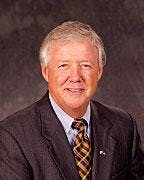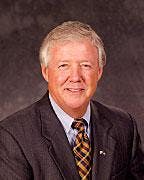Kerr-McGee Corp. in Oklahoma City is transitioning into a pure-play exploration and production company, intent on achieving consistent growth in share value. It plans to divest low-growth, high-cost properties in favor of a larger inventory of low-risk development projects and high-potential exploration prospects.
Its three-pronged strategy is to accelerate US onshore development activities, with an emphasis on the Wattenberg and Greater Natural Buttes areas, where it has identified projects representing more than 400 million boe of potential resources. It expects to complete projects that will provide more than 60% of its projected production replacement. It also expects to drill 8-12 high-potential new-field wildcats each year.
Repeatable growth
“We positioned our company in 2004 to be a stronger, more-balanced company with all the elements in place to assure a predictable yet repeatable and consistent growth into the future years,” said Luke R. Corbett, chairman and chief executive officer of Kerr-McGee.
Kerr-McGee acquired Westport Resources Corp. of Denver in a merger valued at $3.4 billion in 2004. Westport had 1.8 tcf of proved gas-equivalent reserves, mainly in the Rocky Mountain and Texas Gulf Coast areas. Half of the reserves are in and around Natural Buttes field in the Uinta basin in northeastern Utah. Kerr-McGee said at that time that the Greater Natural Buttes area was similar to its Wattenberg field, where the company could apply its expertise in tight-gas and supply-chain management to maximize recovery.
Corbett said: “Those types of gas plays, what we call unconventional resources, are going to dominate what’s happening in the Rocky Mountains as we go forward. We started that process in 2001 with the purchase of HS Resources. We continued that with the purchase of Westport Resources. We have over 10,000 projects already identified, so it’s predictable, it’s repeatable, and it’s long-lived gas resources that will underpin our program as we go forward and position us to be less dependent on the drillbit for replacing our production base.”
HS Resources Inc., San Francisco, was the largest operator in the Wattenberg field area of the Denver-Julesberg basin of northeastern Colorado when it was acquired by Kerr-McGee for $1.7 billion in early August 2001.
In 2004, Kerr-McGee exchanged its interests in noncore oil and gas assets in the Arkoma basin in southeastern Oklahoma for cash and BP PLC’s interest in Blind Faith field in 7,000 ft of water 160 miles southeast of New Orleans on Mississippi Canyon blocks 695 and 696. Kerr-McGee has a 37.5% working interest in Blind Faith; Chevron is operator with the remaining 62.5% working interest.
Earlier this month, Kerr-McGee directors sanctioned development of Blind Faith field with a semisubmersible production facility. First production is expected in the first half of 2008. The field has an estimated gross resource potential exceeding 100 million boe. It’s expected to initially produce 30,000 b/d of oil and 30 MMcfd of gas in the first half of 2008 (OGJ Online, Oct. 10, 2005).
“That was a discovery just sitting there waiting for creative opportunity to take place,” Corbett said.
Business development
In addition to the company’s Lower 48 operations, Corbett said, “We’ll be drilling in proven world-class hydrocarbon basins around the world, such as Brazil, Angola, Alaska.”
The company also will work at what Corbett calls “creative business development” and has established a group for that purpose. “I’d like to find more HS Resources and Westport Resources,” Corbett said.
Kerr-McGee directors recently approved separation of its chemical business through an initial public offering of Class A common stock of its wholly owned subsidiary, Tronox Inc., a manufacturer of titanium dioxide pigment, in the fourth quarter. Kerr-McGee will hold Tronox’s Class B common stock (OGJ Online, Oct. 6, 2005).
In August, a Kerr-McGee affiliate agreed to sell all of the company’s North Sea operations for $3.5 billion cash and assumption of abandonment obligations and related derivative liabilities. The North Sea assets include proved reserves of 231 million boe and average production of 77,700 b/d in the second quarter. That represented 21% of Kerr-McGee’s total production at that time. The company also plans to divest its Gulf of Mexico shelf assets and select US onshore properties.
Like most offshore operators, Kerr-McGee lost production when Hurricanes Katrina and Rita ripped through the Gulf of Mexico within a few weeks of each other. Analysts say the production lost to hurricanes this year will decrease energy supplies and keep prices high in 2006-07.
“But in a broader sense it amplifies the fact that this country needs an energy strategy, not just an energy policy,” Corbett said. “Let’s think about oil, natural gas, coal, renewable energy, nuclear. And then let’s look at the risk-reward associated with those [energy alternatives] and devise a strategy around that and come up with an energy solution that is compatible with the quality of life we want to continue in the US.”✦
Career highlights
Luke R. Corbett is chairman and chief executive officer of Kerr-McGee Corp.
Employment
He began his career as a geophysicist with Amoco Production Co. in 1970. In 1981, he joined Mitchell Energy Corp. and in 1983 became chief geophysicist for Aminoil Inc., where he subsequently held the positions of manager of domestic exploration and vice-president of domestic exploration.
Corbett joined Kerr-McGee’s Exploration and Production Division in 1985 as vice-president of geophysics. He became vice-president of exploration in 1986 and was named senior vice-president of exploration in 1987. Corbett was named a senior vice-president of Kerr-McGee in 1991, group vice-president in 1992, and president and chief operating officer in 1995.
He was elected chairman and chief executive in 1997. Following the company’s merger with Oryx Energy Co. in February 1999, Corbett became chief executive officer. He was named to his current position in May 1999.
Education
Corbett received a bachelor’s degree in mathematics from the University of Georgia in 1969.


